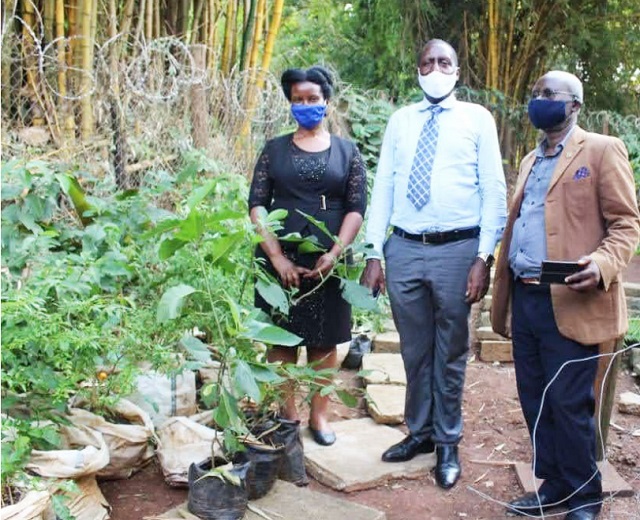
Dr. Amanda Tumusiime takes on research and community outreach in latest project showcasing the relationship between art and nature.
Kampala, Uganda | DOMINIC MUWANGUZI | The so what question stands out every time one mentions they are an artist. “So what if you are an artist?” The question will often be paused to the artist; they will only be rescued from this interrogation if they can actually draw their subject. A failure to do will imply to the inquirer, that this artist is not ‘serious’ or only passing time. Yet art can be a fruitful profession, particularly in the way it enables humankind to connect with nature. An ongoing project by art researcher, Dr. Amanda Tumusiime of the Faculty of Fine art Makerere, now under the College of Engineering Design and Technology, (CEDAT), highlights the correlation between art and nature. In her small garden, she has planted over 100 different species of plants to foster a multiplicity of benefits of nature to the art discipline.
Naturally, the plants in the garden are a form of inspiration to design students who use them in the designing of fabrics. The plants are also used in the still life drawing classes where emphasis is put in drawing still objects and fruits or plants. But the concept of the existing relationship between nature and art becomes more meaningful when research, including the theme of recycling, is explored. Firstly, it is important to note, Dr. Tumusiime’s garden is found in a former garbage site. Here, there were both bio- degradable and non- degradable waste which the academic researcher and her team had to sort out first. Through this process, recycling was undertaken; the plastic bags where appropriated into planting spaces for wide-ranging seedlings and the found dead wood collected to create manure. Notably, is the technique used in the planting of the seedlings whereby, the seeds that produce edible plants like grapes and lemon herbs, are planted in wooden objects and the non edible plants are planted in plastic bags. Secondly, the artist undertook research on the type of plants she wanted to occupy this space. In this, she was intent to plant only seedlings that are of benefit to the community. This according to her would be easy to attract the attention of everyone in the neighborhood; regardless of social status or level of education.
In response to this communal approach- contextualized within one of the three functions of a university: teaching, research and.community outreach- the researcher grafted bitter leaf ( Vernonia amygdalina) also known locally as Mululuza, seedlings in her garden as a gesture to nature conservation. According to her story, she says that this grafting was inspired by a particular scenario. “I was walking one day in my neighborhood and I noticed this particular plant had been raided and stripped off almost all the leaves and branches by the community. I only managed to rescue a small stalk I planted to conserve its benefit.” Incidentally, bitter leaf is commonly known to cure common diseases like malaria. In the recent past, there have also been research pointing to the efficacy of this natural herb to prevent the transmission of Covid-19. This is because the herb contains one bitter substance called anthraquinone.
Fast forward to the present, the salvaged stalk has now produced several seedlings. Through a collaborative initiative with a local non profit entity, Business Friends Africa, the academic lecturer has decided to donate the plants to several schools in Kampala and Wakiso districts. The significance of this scheme is not only promote a sensitization and mobilization campaign on nature conservation through planting plants that are of benefit to the community, for example Covid-19 prevention, but to demonstrate the critical relationship between nature and art.
Dr. Amanda Tumusiime’s exceptional undertaking to illustrate the correlation between nature and art is timely in so many ways. Firstly, it helps to answer the question: why do artists create art? Here, it is because artists are inspired by their immediate surroundings, including nature itself. The concept of nature naturally can not be detached from man’s existence because we depend on it to survive on a day to day basis. Secondly, this project exposes how vital recycling is to local communities. Incidentally, the theme continues to be of major inspiration to many contemporary artists, particularly those living in fast developing urban locales like Kampala. Last but not least, it is a call to emphasize the idea of research at higher institutions of learning like Makerere. It is only through research that meaningful relationships between artist and art, artist and community can be established and sustained for purpose of vibrant art ecology.
****
Dr. Amanda Tumusiime’s garden is located within the University campus
 The Independent Uganda: You get the Truth we Pay the Price
The Independent Uganda: You get the Truth we Pay the Price



